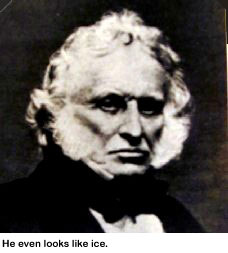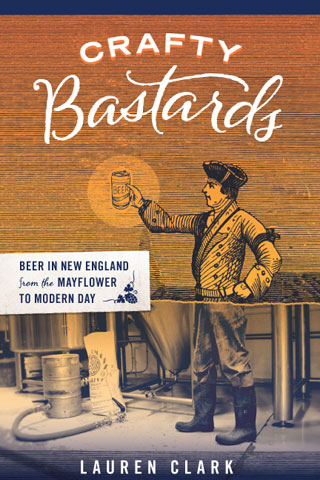June 12th, 2009
Of ice and ingenuity
 The first definition of “cocktail” appeared in a newspaper in 1806. The same year, Frederic “the Ice King” Tudor’s first commercial shipment of ice left Boston harbor. Coincidence?
The first definition of “cocktail” appeared in a newspaper in 1806. The same year, Frederic “the Ice King” Tudor’s first commercial shipment of ice left Boston harbor. Coincidence?
Maybe, but there’s no denying that the ice trade and cocktails came of age together in the 1800s. Boston, and by extension New England, tend to get overlooked in cocktail histories, what with the likes of New York, San Francisco, New Orleans, L.A. and even London making greater claims to fame when it comes to actual drink invention. But cocktails wouldn’t have been invented in the first place without ice. Which brings us to Boston.
Ice from New England’s ponds and rivers had been harvested for a long time before Tudor came along, but he was the first guy to bet that people would actually pay for the stuff. His first markets were places where ice was hard or impossible to come by: the West Indies, New Orleans, Charleston. (His first ice source was Fresh Pond in Cambridge.) But he later extended his business even to cooler places by offering a uniform product that became cheaper and cheaper through innovation in harvesting and delivery. We’re not just talking ice cubes, we’re talking ice boxes and ice houses and a slew of industries becoming dependent on the refrigeration the ice provided: fishing, meat processing, brewing, hospitals. By the 1850s, Tudor was shipping ice all over the world. He got rich — he was one of America’s first millionaires — and he pioneered an entire industry with many competitors. The industry was a significant part of New England’s economy until machine-made ice made it obsolete in the late 1800s/early 1900s.
There’s a fascinating description of the rise and fall of the New England ice trade in a book by an MIT business professor, James Utterback: Mastering the Dynamics of Innovation. I’m not kidding. I never get tired of reading sentences about Yankee ingenuity: “It was the resourcefulness of Tudor, and other Bostonians who became his competitors, that prompted historian Daniel Boorstin’s remark that ‘Using the sea, New England versatility made the very menaces of the landscape [granite, ice] into articles of commerce,'” writes Utterback.
But my favorite passage in the chapter (sexily titled “Invasion of a Stable Business by Radical Innovation”) is about one of Tudor’s rivals — Gage, Hittinger and Company — trying to break into the British market in 1842:
Hittinger knew that the tradition-bound British would not use ice unless they were shown how, so he hired a number of Boston bartenders and took them to London on a ship scheduled to arrive before the ice. When the cargo of “cold comfort” arrived, Hittinger and his bartenders were already set up in an opulent and brightly illuminated hall and there “initiated the English into the mysteries of juleps, cocktails” and “Boston notions” of various types. Before long, fashionable Britons were hooked on New England ice.
“Boston notions!” What the hell were those, I wonder?
Boston drinkers, know the story of the Ice King, so that when you cross paths with some New Yorker or San Franciscan who thinks his city pioneered cocktails, you can give him a smirk and tell him that your city invented friggin’ ice for chrissake.
Tags: cocktail history, Frederic Tudor, New England ice trade
Posted in Books & resources | 4 Comments »
